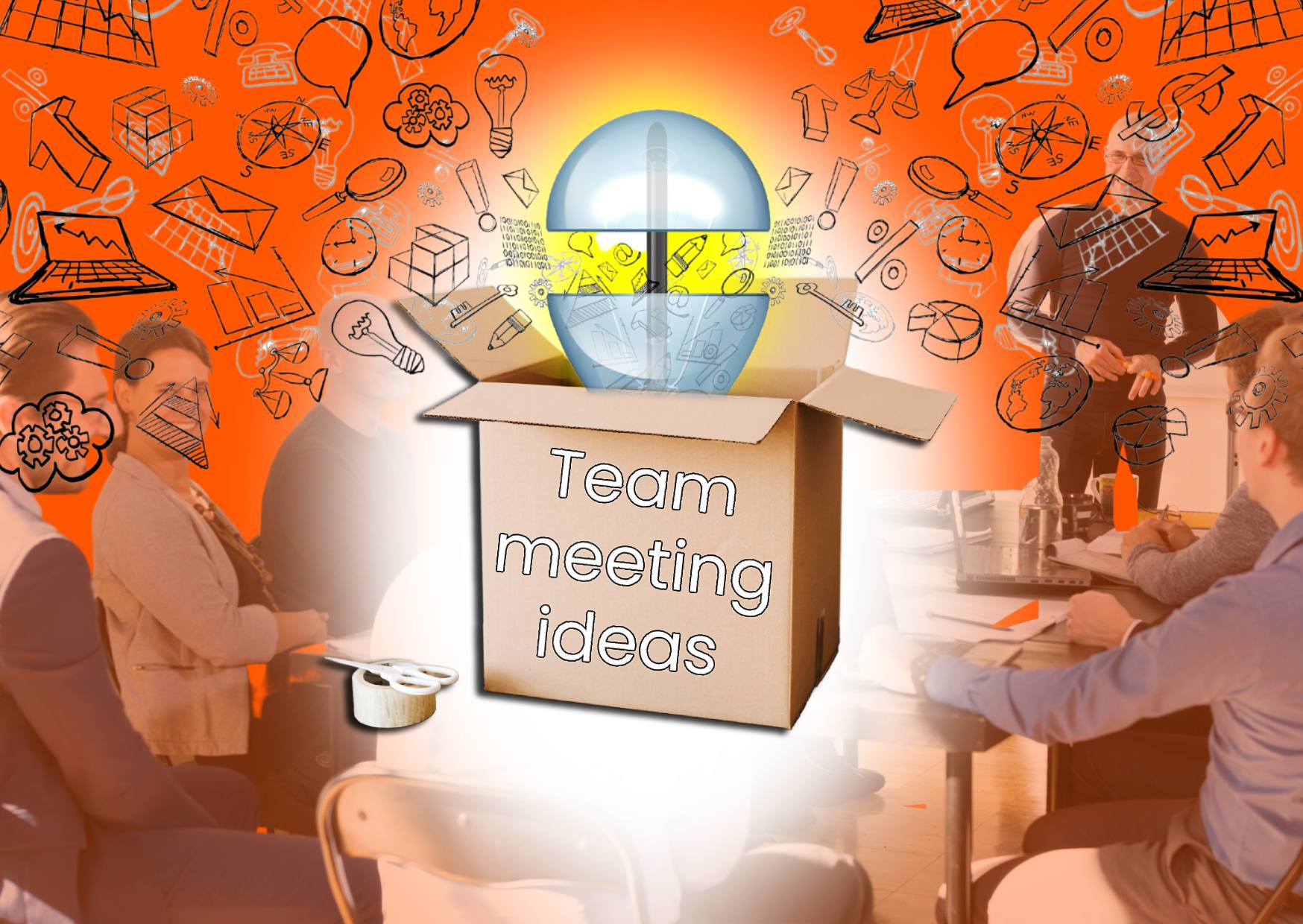15 Out of the Box Team Meeting Ideas to Spark Collaboration
Tired of the same old sit-and-nod team meetings?
Want to ignite engagement, foster collaboration, and stoke the fires of creativity within your team?
You’ve landed at the right place.
In this blog post, we’ll dive into 15 out-of-the-box team meeting ideas that promise to shake things up.
We’ll explore why these meetings are so crucial, the common challenges you might face, and how to implement and measure the effectiveness of these dynamic meeting formats.
But that’s not all!
We’ll also delve into the nuances of fostering diversity and inclusivity in meetings and share pro tips for facilitating these sessions like a champ.
So buckle up, and let’s transform your team meetings from mundane to magical!
Contents
Why are Team Meetings Important?
What are the Challenges Conducting Engaging Team Meetings?
15 Out of the Box Team Meeting Ideas
How to Implement These Team Meeting Ideas?
How to Measure the Effectiveness of Team Meetings?
How can you Ensure Inclusivity and Diversity in Team Meetings?
What are Some Top Tips When Facilitating Team Meetings?
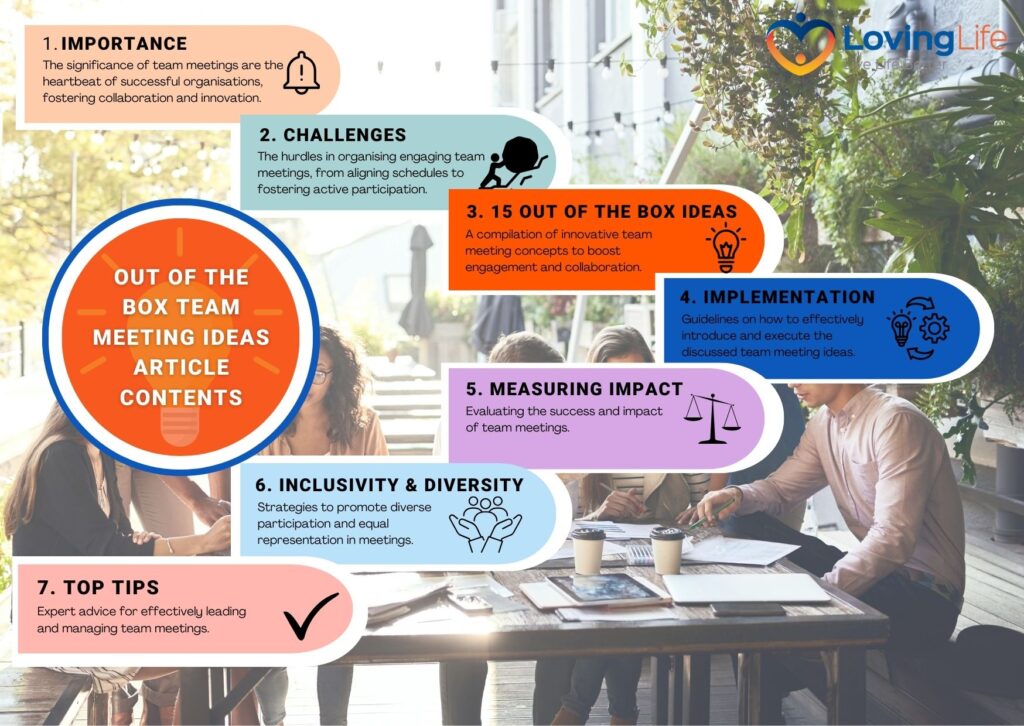
Why are Team Meetings Important?
Picture this – a group of skilled individuals, each buzzing with ideas, but without a platform to harmonize their thoughts. That’s a team without meetings.
Now, imagine a symphony where every instrument is perfectly tuned, creating a captivating melody. That’s a team with well-run meetings.
In essence, team meetings are the heartbeat of a successful organisation.
They fuel collaboration, nurture innovation, and strengthen bonds.
They’re the vital crossroads where shared goals meet individual insights.
When conducted right, these gatherings become a catalyst for creative problem-solving, a stage for celebrating victories, and a workshop for refining strategies.
Team meetings are more than just a ‘necessary evil’; they’re the golden bridge that transforms a group of ‘me’ into a powerful ‘we.’
What are the Challenges Conducting Engaging Team Meetings?
Organising engaging team meetings is a bit like trying to master the art of plate spinning.
Sounds intense, right? Well, it can be.
The first challenge is like that wobbly plate – getting everyone’s schedules to align. Time zones, personal commitments, and project deadlines can turn this task into a real jigsaw puzzle.
The second plate, keeping the meeting relevant, is equally tricky.
You’ve got to ensure the meeting serves a purpose and resonates with every attendee.
Too often, meetings become a parade of monotonous reports, leaving the team zoned out and your message lost in the ether.

Now, imagine spinning a third plate – fostering active participation.
Even in the most harmonious teams, you’ll find wallflowers who hesitate to voice their ideas.
Encouraging open dialogue and interaction can be quite the balancing act.
Lastly, there’s the ‘virtual meeting’ plate, a new addition to our juggling routine.
With screen fatigue, technical glitches, and distractions aplenty, maintaining focus and engagement in the era of remote work adds a whole new layer of complexity.
But don’t fret – while these challenges might seem daunting, they’re not insurmountable.
And that’s exactly why we’re here.
So, hold on tight as we unravel some unique and innovative team meeting ideas to keep all those plates spinning in perfect harmony. Ready? Let’s dive in!
15 Out of the Box Team Meeting Ideas
1. Wellbeing Workshop: Nurturing Minds, Fuelling Performance
Let’s kick off with something that often gets overlooked in our fast-paced work lives – wellbeing.
Why not turn one of your team meetings into a wellbeing workshop?
It’s not only an out-of-the-box idea, but it’s also a caring gesture that demonstrates you value your team’s mental and physical health.
You can invite a wellbeing speaker or a fitness expert to guide your team through relaxation exercises, stress management techniques, or even a quick office-friendly workout.
This not only brings a breath of fresh air into the standard meeting setup but also equips your team with tools to better manage their workload and stress levels.
Remember, a happy, healthy team is not just more productive; they’re also more creative and collaborative.
So, let wellbeing take center stage and watch as the benefits ripple out across your team.
Check out our other blog on “15 Fun Wellbeing Activities for Team Meetings“
Steps to Kick-off and Implement Wellbeing Workshops
To introduce a wellbeing workshop in your team meetings, start by recognising the importance of mental and physical health in today’s hectic work environment.
Schedule a dedicated session for wellbeing, emphasising its significance.
Invite an expert, be it a wellbeing speaker or a fitness professional, to guide your team through relaxation exercises or stress management techniques.
This fresh approach not only breaks the monotony of regular meetings but also provides your team with practical tools to manage stress.
By prioritising wellbeing, you’ll likely see a boost in team creativity, collaboration, and overall productivity.
2. Idea Factory: Unleashing Creativity and Collaboration
Picture your team, sitting around the table. There’s a buzz in the air, a mix of anticipation and excitement.
Why? Because today, your team meeting is transformed into an Idea Factory.
In this lively setup, everyone becomes an inventor, each pitching a brainchild – a fresh project idea, an efficiency hack, or even a sustainability initiative.
This exercise does wonders for team spirit.
It’s an adrenaline shot of creative freedom, empowering individuals, and boosting a sense of ownership.
Plus, in this sea of ideas, you might just stumble upon the next game-changing strategy that propels your team forward.

Steps to Kick-off and Implement the Idea Factory
To implement the “Idea Factory” in team meetings, first set clear objectives, be it brainstorming project ideas or efficiency improvements.
Appoint a facilitator to guide the session and ensure an open environment where all ideas are welcomed.
Allocate time for each member to present, and offer prompts if needed.
After presentations, encourage brief feedback and document all ideas.
Conduct a team vote to prioritise the most promising concepts, followed by scheduling follow-up meetings for deeper exploration.
Regardless of outcomes, celebrate the team’s creativity to boost morale.
3. Skill Swap Session: Broadening Horizons, Tightening Bonds
What if your team meeting became a treasure trove of knowledge?
Picture this: a Skill Swap Session, where each individual gets a chance to shine, sharing a skill or topic close to their heart.
It could range from a Photoshop tutorial to baking the perfect sourdough.
The beauty of this exercise lies in its simplicity.
It’s a powerful learning experience, a spotlight on the diversity of your team’s skills.
Plus, it allows team members to appreciate the intricacies of each other’s roles, building respect and understanding.
And who knew your quiet analyst was a secret rock-climbing champ?

Steps to Kick-off a Skill Swap Session
Begin by announcing the Skill Swap Session well in advance, giving team members ample time to prepare.
Allocate specific time slots for each participant, ensuring that everyone gets an opportunity to present without the session running over time.
Encourage a mix of topics, allowing members to delve into both professional expertise and personal passions.
This could range from a technical skill related to their job role to a personal hobby like baking or rock-climbing.
Provide any necessary resources or tools for presentations.
This will help to ensure a smooth and informative session.
The goal is to foster a deeper appreciation for the diverse talents within the team, building both respect and camaraderie.
4. Two Truths and a Lie: A Game of Trust and Trivia
Imagine injecting the thrill of a classic game of Two Truths and a Lie into your team meeting.
The rules are simple: each member shares two truths and a cunning lie about themselves, and the rest turn detective.
It’s more than just fun – it’s a glimpse into each other’s world, a chance to learn something new about your teammates.
Each guess, each reveal, tightens the team bond, creating a network of trust and camaraderie that extends far beyond the meeting room.

Steps to Implement “Two Truths and a Lie” in Team Meetings
Begin by scheduling a dedicated session for the game, ensuring ample time for all participants.
On the day of the meeting, designate a facilitator to guide the session, ensuring each participant gets a turn.
As each member presents their truths and lie, use a voting system (like a show of hands) for the team to guess the falsehood.
After all guesses are in, the member reveals the lie, perhaps sharing a short backstory for added engagement.
To wrap up, consider having a light-hearted debrief, discussing the most surprising truths or cleverest lies.
This structured approach ensures the game runs smoothly, maximizing its team-building potential.
5. The Appreciation Round: Building a Culture of Recognition
What if your team meeting morphed into a celebration?
Picture an Appreciation Round, a special segment where each person takes turns to recognise a colleague’s efforts or achievements.
It’s a shining spotlight on the unsung heroes, an ode to the behind-the-scenes victories.
This heart-warming exercise does more than just boost morale – it builds a culture of appreciation and respect.
Teams that value each other, that celebrate each other, can move mountains together.

Steps to Implement “The Appreciation Round” in Team Meetings
Start by setting aside a portion of your next team meeting specifically for the Appreciation Round.
Inform team members in advance, allowing them time to reflect on their colleagues’ achievements and efforts.
On the day, have a facilitator or team lead introduce the segment, emphasising its purpose to recognise and celebrate each other.
Each participant then takes a turn to highlight a colleague’s contribution, ensuring everyone is acknowledged.
To make it more memorable, consider using a token of appreciation, like a small award or certificate.
After the session, document the recognitions in a shared space, like a team bulletin or newsletter.
This practice not only uplifts individual spirits but also reinforces a culture where team members value and support one another, fostering a more cohesive and motivated team.
6. Reverse Brainstorming: Tackling Problems with a Twist
Ever tried fixing a problem by making it worse?
Welcome to the world of Reverse Brainstorming, a quirky yet effective problem-solving technique.
In this setup, your team comes up with ways to exacerbate the issue at hand.
This flip in perspective can lead to surprising insights and innovative solutions.
It’s a break from the traditional, an exercise that combines fun with critical thinking.
And most importantly, it fuels collaboration, as your team navigates this topsy-turvy path to problem-solving together.

Steps to Implement “Reverse Brainstorming” in Team Meetings
Begin by identifying a problem or challenge your team is currently facing.
Once you have a clear issue in mind, introduce the concept of Reverse Brainstorming in your next team meeting.
Explain the twist: instead of finding solutions, the goal is to think of ways to worsen the problem.
Allocate a set time for this brainstorming phase, allowing team members to freely share their “negative” solutions.
Once all ideas are on the table, work together to reverse these negative solutions into positive, actionable steps to address the original problem.
This method not only offers a fresh perspective on problem-solving but also encourages team members to think critically and collaboratively.
Conclude the session by summarising the actionable solutions derived from the exercise, ensuring a clear path forward.
7. Lightning Talks: Igniting Curiosity, Encouraging Learning
How about transforming your team meeting into a mini-conference?
Enter the Lightning Talks.
The concept is thrillingly simple: each member presents a 5-minute talk on any subject of their choice.
One could be discussing the life of honeybees while another could dive into the wonders of quantum physics.
It’s a smorgasbord of ideas, fueling curiosity, and learning.
Beyond this, it’s a fantastic platform for team members to improve their public speaking skills and confidence.
This exercise showcases the beauty of diversity within your team, with each talk adding a fresh flavor to the mix.

Steps to Implement “Lightning Talks” in Team Meetings
Start by designating a specific meeting for Lightning Talks, ensuring team members have sufficient time to prepare.
Inform everyone in advance about the concept: a quick 5-minute presentation on any topic they’re passionate about.
Encourage a diverse range of subjects, from personal hobbies to academic interests.
On the day of the meeting, set up a timer to keep each talk within the 5-minute limit, ensuring everyone gets their turn.
After each presentation, allow a brief Q&A session, fostering interaction and deeper understanding.
To make it more engaging, consider recording these sessions for future reference or even sharing them within the organisation.
Not only does this activity promote continuous learning and curiosity, but it also offers team members a platform to hone their public speaking skills and boost their confidence.
Concluding with a feedback or appreciation round can further enhance the experience, celebrating the diverse knowledge and talents within the team.
8. Cultural Show and Tell: Embracing Diversity, Building Inclusivity
What if you could globe-trot without leaving your meeting room?
Try a Cultural Show and Tell.
Encourage team members to share something about their cultural heritage – a folk tale, a traditional dance, or perhaps their favourite holiday dish.
It’s a vivid tapestry of stories and experiences, a celebration of diversity.
Plus, it’s an important step towards inclusivity, fostering mutual respect and understanding.
And remember, diverse teams tend to be more innovative – so, this cultural exchange might just spark the next big idea!

Steps to Implement “Cultural Show and Tell” in Team Meetings
Begin by allocating a meeting specifically for the Cultural Show and Tell, giving team members time to decide what they’d like to share.
Send out a communication explaining the concept, encouraging everyone to delve into their cultural heritage and choose something meaningful to present.
This could be a cherished family recipe, a traditional song, or even a memorable folk tale.
On the day, create a welcoming environment, emphasising the importance of mutual respect and active listening.
As each member shares, encourage questions and interactions to deepen understanding and appreciation.
To make it more immersive, consider incorporating multimedia elements like videos or music.
Conclude the session with a reflection on the importance of diversity and inclusivity, highlighting the potential for innovation that arises from diverse perspectives.
This exercise not only celebrates cultural diversity but also strengthens team bonds and fosters a more inclusive work environment.
9. Silent Meetings: Boosting Focus, Enhancing Productivity
Silent meeting?
Sounds counter-intuitive, doesn’t it?
But it’s a surprisingly effective strategy.
Here’s how it works: at the start, everyone gets a brief or a problem statement.
Then, you all dive into a period of quiet reflection, jotting down thoughts and ideas.
No discussions, no interruptions, just focused thinking.
Afterward, you regroup to share your insights.
This approach, borrowed from the likes of Amazon and Apple, can dramatically boost productivity and creative thinking.
After all, sometimes, silence can indeed speak volumes.

Steps to Implement “Silent Meetings” in Team Meetings
Kick off by setting the stage for a Silent Meeting, explaining its purpose and potential benefits.
At the beginning of the meeting, distribute a clear brief or problem statement to all participants.
Ensure everyone has the necessary tools, such as notepads or digital devices, to jot down their thoughts.
Set a specific time frame, perhaps 20-30 minutes, for this silent reflection period.
During this time, emphasise the importance of no discussions or interruptions, allowing everyone to deeply focus on the task at hand.
Once the silent period concludes, transition into a sharing phase where each member discusses their insights and findings.
To enhance the experience, consider using a timer to ensure everyone gets an equal opportunity to share.
Reflect on the outcomes and gather feedback on the process, adjusting for future Silent Meetings.
Adopted from innovative companies like Amazon and Apple, this method can lead to heightened productivity and more profound creative insights, proving that sometimes, less is indeed more.
10. Walk and Talk Meetings: Stirring Creativity, Boosting Health
Imagine swapping the confines of the meeting room for the great outdoors.
That’s the essence of Walk and Talk meetings.
As the name suggests, you conduct the meeting while taking a leisurely walk, preferably in a park or a quiet neighbourhood.
Studies show that walking can stimulate creativity and focus.
Plus, it’s a welcome break from the sedentary work life, offering a dash of fitness.
Be it brainstorming a new project or resolving conflicts, a breath of fresh air can indeed make a big difference!

Steps to Implement “Walk and Talk Meetings”
Start by identifying a suitable location for the Walk and Talk meeting, preferably a serene park or a quiet neighborhood close to your workplace.
Inform team members in advance, allowing them to dress appropriately for the walk.
On the day, gather at the designated starting point and set a clear agenda for the meeting.
As you begin the walk, encourage open dialogue and active listening.
To ensure everyone stays on track, consider designating a facilitator to guide the conversation.
Periodically switch walking partners, allowing for diverse interactions and perspectives.
After the walk, regroup for a brief reflection, discussing key takeaways and any action items.
Studies have highlighted the benefits of walking in enhancing creativity and focus, making this approach not only refreshing but also productive.
Whether it’s brainstorming or conflict resolution, the combination of movement and fresh air can lead to more dynamic and effective discussions.
11. Town Hall Meetings: Fostering Transparency, Encouraging Communication
Have you ever thought of turning your team meeting into a miniature town hall?
The agenda is open, the floor is yours, and the topics can range from operational challenges to new initiatives.
It’s a democratic space where everyone’s voice matters, and everyone’s input counts.
A town hall meeting fosters transparency, bridges gaps between management and employees, and stimulates healthy communication.
It’s a chance to take stock, realign, and forge ahead as a unified, informed team.

Steps to Implement “Town Hall Meetings”
Begin by scheduling a dedicated time slot for the Town Hall meeting, ensuring it doesn’t clash with other critical events.
Inform team members well in advance, highlighting the open agenda and encouraging them to come prepared with topics or concerns they’d like to discuss.
On the day, set up a conducive environment, perhaps arranging seating in a circular or semi-circular format to promote inclusivity.
Appoint a moderator or facilitator to guide the session, ensuring a smooth flow and giving everyone a chance to speak.
Start with a brief overview or update from the management, followed by an open floor for discussions.
Use tools like microphones or digital platforms for remote participants to ensure clarity.
After each topic, allow for Q&A or feedback, fostering interactive dialogue.
Conclude with a summary of key takeaways and actionable steps.
The essence of a Town Hall meeting is its democratic nature, promoting transparency and open communication.
By providing a platform where every voice is heard, you’re fostering a culture of trust and collaboration, ensuring the team moves forward cohesively and informed.
12. Futuristic Brainstorming: Unleashing Imagination, Driving Innovation
What if your team could leap into the future?
Welcome to Futuristic Brainstorming, where your team speculates about future trends, challenges, and opportunities in your industry.
It’s like a time capsule of ideas, opening a world of possibilities.
This exercise propels out-of-the-box thinking, encourages foresight, and can lead to innovative strategies.
Plus, imagining future scenarios together can strengthen team cohesion.
Who knew crystal ball gazing could be so productive?
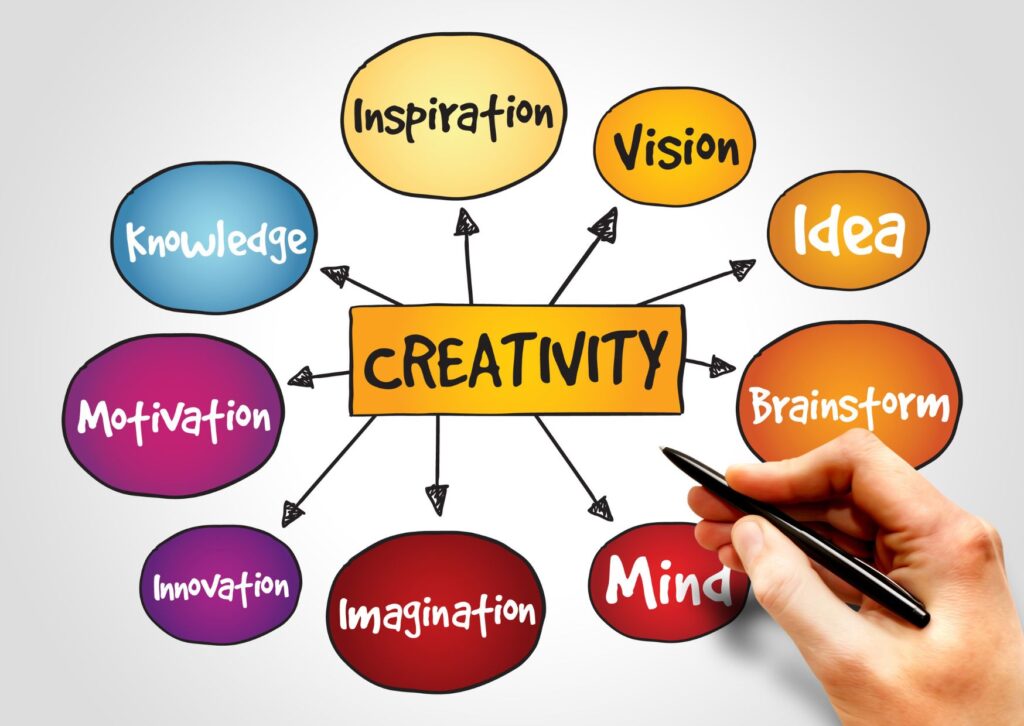
Steps to Implement “Futuristic Brainstorming”
Kick off by setting a theme or topic related to potential future trends in your industry.
Inform your team in advance, allowing them to research or ponder on future possibilities.
On the day of the brainstorming session, create an environment that encourages creativity, perhaps using visuals or music to set a “futuristic” mood.
Begin with a brief introduction, explaining the purpose and potential benefits of such forward-thinking.
Then, dive into the brainstorming, allowing each member to share their visions, speculations, and predictions.
Use tools like whiteboards or digital platforms to document these ideas, creating a visual representation of the team’s collective foresight.
After the brainstorming, group similar ideas and discuss potential strategies or innovations that could arise from these future scenarios.
Conclude by reflecting on the importance of proactive thinking and the potential benefits of anticipating future trends.
This exercise not only fosters innovative thinking but also promotes team unity as everyone collaborates to envision the future together.
13. Book Club Meetings: Igniting Discussions, Inspiring Ideas
What if your team meeting felt like a cosy book club gathering?
Choose a relevant book every month, and dedicate a meeting to discussing its ideas, insights, and implications.
The book could be related to your industry, leadership, self-improvement, or even a successful business story.
This approach encourages continuous learning, sparks meaningful conversations, and can lead to fresh ideas.
Plus, sharing perspectives on a common read can bring your team closer, fostering intellectual camaraderie.
This blog on How to Run a Thought-Provoking Book Club Meeting might be useful.

Steps to Implement “Book Club Meetings”
Begin by selecting a relevant book, either through team suggestions or based on industry relevance.
Once the book is chosen, communicate the selection to the team, giving them ample time to read it before the scheduled discussion.
On the day of the Book Club meeting, set a relaxed and conducive environment, reminiscent of a cosy gathering.
Start the discussion with a brief summary or overview of the book, then open the floor for team members to share their insights, takeaways, and opinions.
Facilitate the conversation, ensuring diverse perspectives are heard and guiding the discussion towards actionable insights or strategies that can be derived from the book.
Conclude by selecting the next book or taking suggestions for future reads.
This method not only promotes continuous learning and intellectual growth but also fosters team bonding as members share and discuss a common topic, enhancing both personal and professional relationships.
14. The Inspiration Hour: Motivating, Empowering
Everyone needs a dose of inspiration now and then.
Why not incorporate it into your team meetings?
The Inspiration Hour could feature motivational TED talks, success stories, or even guest speakers from different walks of life.
The aim is to inspire, fire up your team’s motivation, and trigger new ways of thinking.
This hour could be the high-octane fuel your team needs to power through challenges and achieve their goals.

Steps to Implement “The Inspiration Hour”
Start by scheduling a dedicated time slot for The Inspiration Hour in your regular team meetings.
Prior to the session, curate a list of potential motivational content, such as TED talks, success stories, or potential guest speakers.
Share options with the team and perhaps even conduct a poll to choose the most preferred content for the upcoming session.
On the day, set up the necessary equipment or platform, ensuring a seamless viewing or listening experience.
If you’ve opted for a guest speaker, coordinate with them in advance to ensure they understand the team’s dynamics and what you hope to achieve from their talk.
After the session, facilitate a discussion, allowing team members to share their takeaways, insights, and how they feel inspired.
Concluding with actionable steps or goals can help channel the motivation derived from the session into tangible results.
The Inspiration Hour serves as a rejuvenating break from routine meetings, aiming to reignite passion, motivation, and innovative thinking within the team.
15. Problem-Solving Role Play: Empathising, Understanding
How about spicing up problem-solving with a dash of drama?
Enter Problem-Solving Role Play.
Each team member assumes a role – maybe a client, a stakeholder, or a team member from a different department.
Now, address the problem at hand from these perspectives.
This switch in roles can lead to a deeper understanding, empathetic problem-solving, and innovative solutions.
It’s more than a game; it’s a lesson in empathy and a push towards a more inclusive workplace.
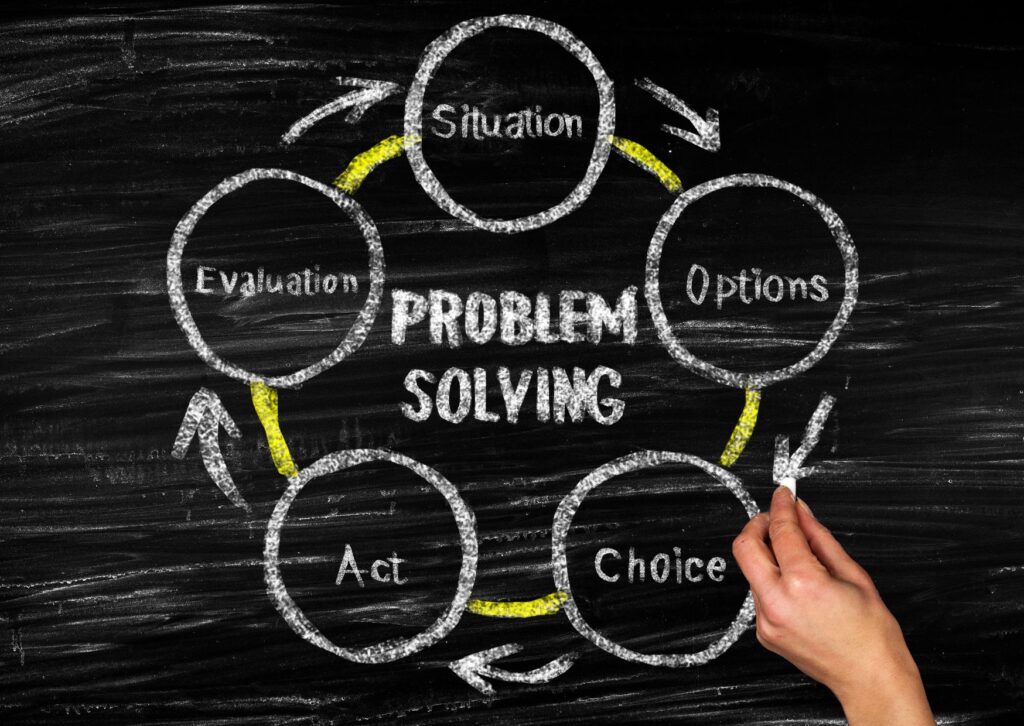
Steps to Implement “Problem-Solving Role Play”
Begin by identifying a current challenge or problem your team is facing.
Once the issue is clear, introduce the concept of Problem-Solving Role Play in your next team meeting.
Assign different roles related to the problem, such as a client, a stakeholder, or a representative from another department.
Ensure that team members have a clear understanding of their assigned roles and the perspectives they should adopt.
Set the stage for the role play, providing any necessary props or setting up the environment to make it more realistic.
As the role play progresses, encourage team members to genuinely immerse themselves in their roles, addressing the problem from their assigned perspectives.
After the role play, regroup and discuss the insights gained from the exercise.
Highlight the importance of empathy in problem-solving and how this approach can lead to more inclusive and effective solutions.
This method not only adds a creative twist to problem-solving but also fosters a deeper understanding and empathy among team members, promoting a more collaborative and inclusive work environment.
How to Implement These Team Meeting Ideas?
Wondering how to bring these fascinating team meeting ideas to life? Here’s a practical roadmap to guide you through it!
Step 1: Set Clear Objectives
Start by asking yourself, “What do I hope to achieve with these team meetings?”
Are you looking to improve team cohesion?
Or perhaps you want to stimulate creativity? Maybe it’s all about improving communication?
By defining your objectives, you can choose the meeting ideas that best align with your goals.
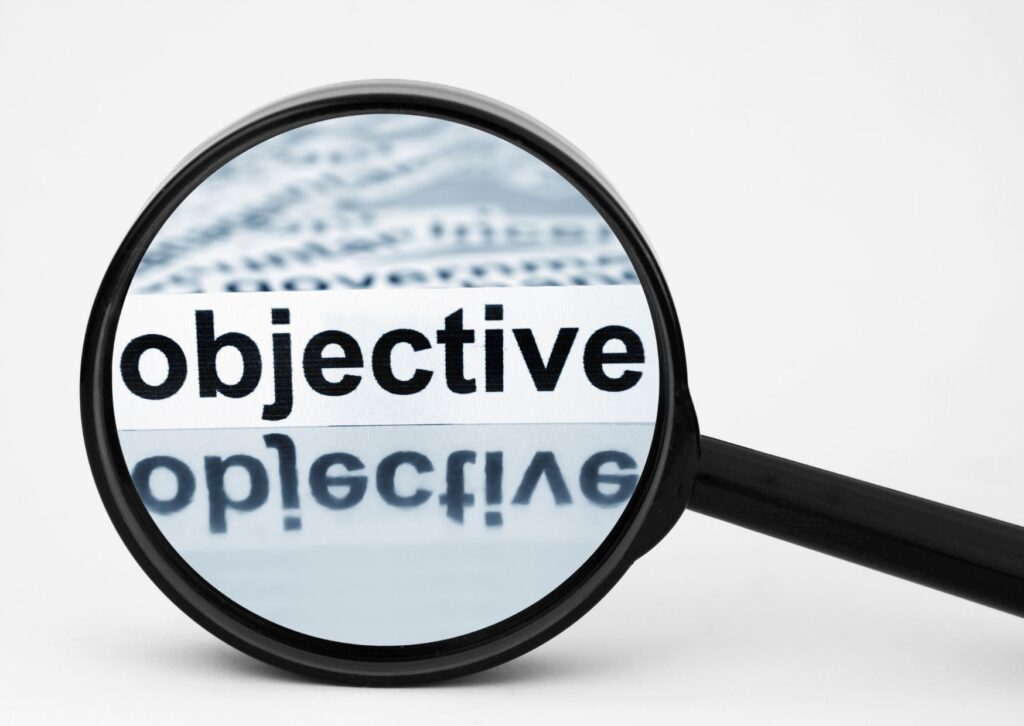
Step 2: Know Your Audience
A team meeting should cater to your team’s unique needs and preferences.
Take the time to understand your team’s dynamics.
Do they enjoy intellectual challenges?
Or are they more inclined towards creative pursuits?
Tailor your chosen meeting idea to suit your team.
Step 3: Plan Ahead
Good planning is crucial for the success of any meeting.
For instance, if you’re organising a Wellbeing Workshop, you might need to hire a professional instructor.
If you’re arranging a Book Club Meeting, you’ll need to choose a book and give your team enough time to read it.
Ensure that you have all the necessary resources in place.
Step 4: Communicate Clearly
Make sure your team knows what to expect from the upcoming meeting.
Share the meeting agenda ahead of time.
If you’re hosting a Skill Swap Session or Lightning Talks, inform your team in advance so that they have sufficient time to prepare.

Step 5: Make It Interactive
To keep your team engaged, ensure the meetings are interactive.
Encourage active participation and value everyone’s contribution.
From Q&A sessions during a Town Hall Meeting to role-playing in a Problem-Solving session, foster an environment where everyone feels heard and involved.
Step 6: Seek Feedback
After the meeting, ask for your team’s feedback.
What did they enjoy?
What didn’t work for them?
Was the meeting helpful?
Use their insights to refine and improve future meetings.

Step 7: Keep Mixing It Up
Variety is the spice of life, and the same applies to team meetings.
Keep alternating between different meeting ideas to maintain interest and engagement.
Remember, there’s no one-size-fits-all approach when it comes to team meetings.
What works best for your team will depend on its unique characteristics and needs.
Happy experimenting!
How to Measure the Effectiveness of Team Meetings?
So, you’ve implemented some exciting new team meeting ideas and you’re keen to know if they’ve made a difference.
Let’s dig into how you can measure the effectiveness of these gatherings!
Attendee Engagement
Start by observing the energy in the room.
Are your team members actively participating, or are they just passively sitting there?
Are they bringing new ideas to the table?
If your meetings are sparking lively discussions and innovative ideas, you’re on the right track!
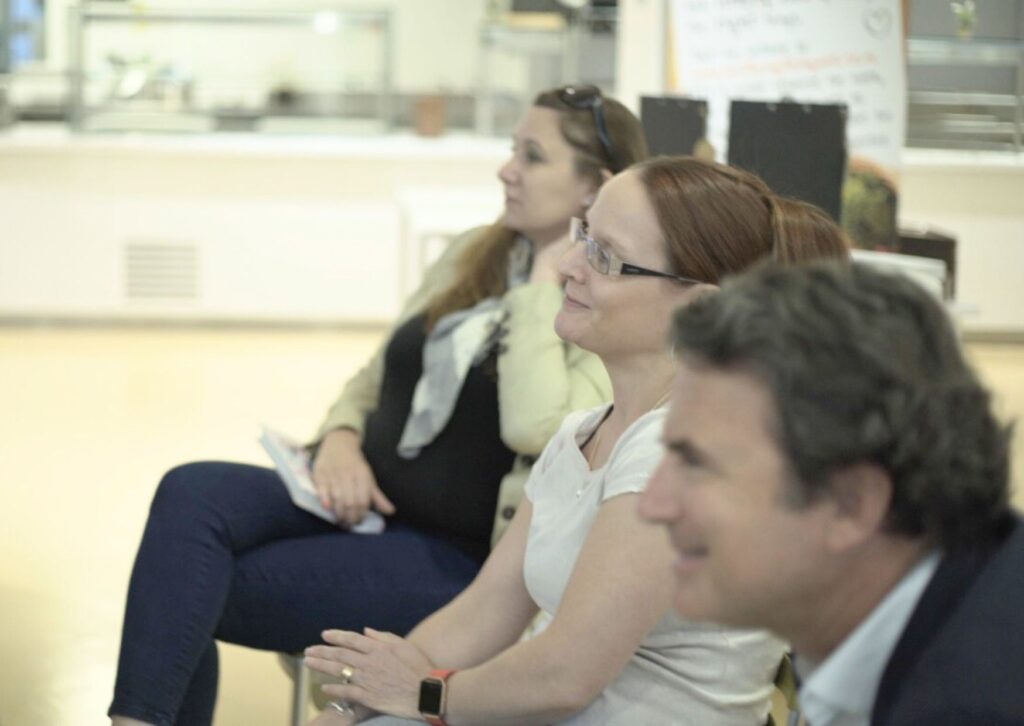
Accomplishing the Meeting’s Objectives
Did your meeting achieve its intended purpose?
If the goal was to brainstorm ideas for a new project, did you end up with a solid list of potential strategies?
If the aim was to improve team communication, did the meeting foster open and effective dialogue?
Aligning outcomes with objectives is a clear measure of effectiveness.
Feedback from Team Members
Feedback is your secret weapon!
Ask your team members for their thoughts.
Did they find the meeting useful?
What did they like and dislike about it? How do they feel it could be improved?
Their insights can offer a wealth of information about how well your meetings are working.
Follow-Through on Action Items
Often, meetings result in specific action items or tasks to be completed.
One of the strongest indicators of a successful meeting is whether these action items are carried out effectively and timely.
If not, it might suggest that the meetings aren’t generating meaningful results.
The Impact on Team Performance
Over time, effective meetings should lead to improved team performance.
You might notice increased productivity, enhanced creativity, or better collaboration.
Keep an eye on these performance indicators to gauge the long-term effectiveness of your meetings.
Improvement in Team Morale
The vibe in the office post-meeting can be a great indicator too.
If your team feels more connected, motivated, and positive, it’s likely that your meetings are hitting the mark!
Remember, measuring the effectiveness of your team meetings isn’t a one-and-done thing.
It should be an ongoing process, with continual tweaks and improvements based on the data you gather.
And hey, don’t forget to celebrate the wins along the way!

How can you Ensure Inclusivity and Diversity in Team Meetings?
In today’s increasingly diverse workplace, fostering inclusivity during team meetings is essential.
Here are some tips to ensure everyone’s voices are heard and valued:
Rotate Roles
Spread the responsibility of leading meetings among all team members, not just those in management or senior roles.
This not only boosts engagement but also gives everyone a chance to contribute, regardless of their job title.
Time-Zone Friendly
If your team is distributed across different time zones, ensure that meeting times are rotated so that no one is always stuck with an inconvenient time.
This way, everyone has a chance to contribute when they’re at their best.
Language Sensitivity
Be mindful of language barriers.
Speak clearly, avoid jargon, and provide space for questions and clarifications.
If necessary, provide translation or interpretation services.
Foster an Open Environment
Encourage an environment where everyone feels comfortable to share their thoughts.
Make it clear that all ideas and opinions are valued.
This helps to foster a culture of respect and mutual understanding.
Take into Account Different Communication Styles
Some people are outspoken, while others prefer to communicate in writing or one-on-one.
Use a mix of communication methods like group discussions, anonymous surveys, or feedback forms to ensure everyone can express themselves in a way they’re comfortable with.
Respect Cultural Differences
Be aware of cultural holidays and observances when scheduling meetings.
Try to learn about the various cultures represented in your team.
This shows respect and ensures everyone feels seen and appreciated.
Accessible Meetings
If any team members have disabilities, make sure the meetings are accessible to them.
This could mean using closed captions for those with hearing impairments, ensuring physical meeting spaces are wheelchair accessible, or providing materials in alternative formats for visually impaired team members.
Regularly Solicit Feedback
Make sure to ask for feedback on the meetings from all participants.
This will help identify any unintentional biases or barriers to participation that might exist.
Inclusivity and diversity in team meetings are not just about ticking boxes.
They’re about creating a space where everyone feels seen, heard, and valued.
When everyone in the team can contribute fully, it benefits not only the individuals but also the team and the organisation as a whole.
What are Some Top Tips When Facilitating Team Meetings?
Stepping into the shoes of a team meeting facilitator? Here are some top tips to help you nail it!
Have a Clear Agenda
Know what you want to achieve from the meeting and communicate this to the team.
Include what topics will be covered, who will be speaking, and how much time each topic is allotted.
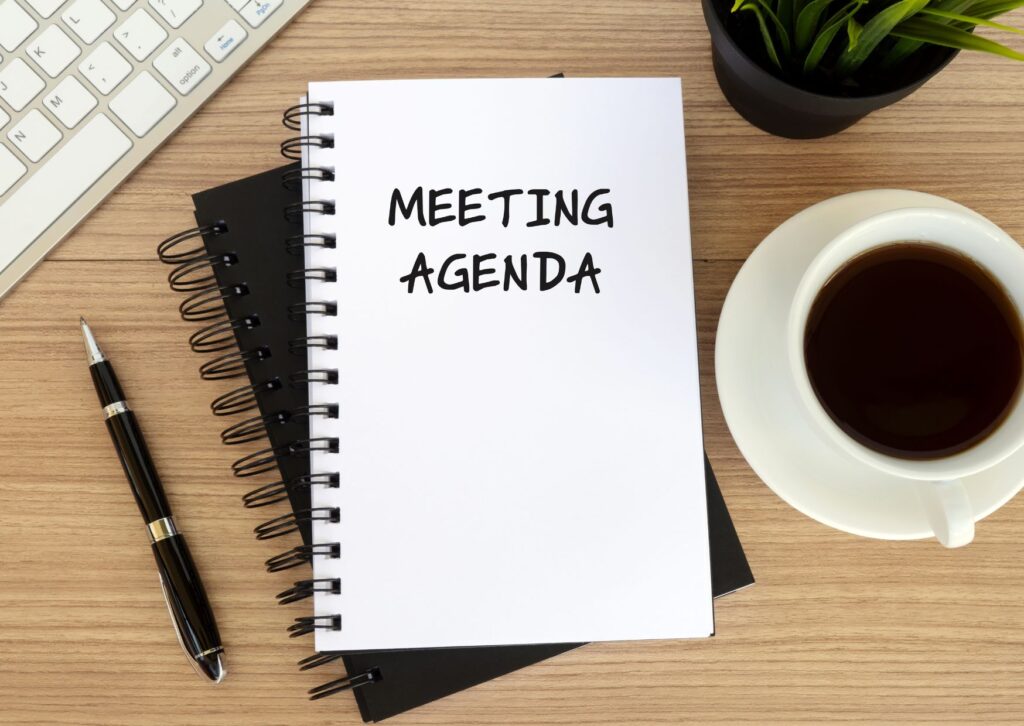
Start on Time, End on Time
Respect everyone’s time.
Start the meeting promptly, even if some attendees are late.
Also, aim to wrap up on time unless there’s a unanimous decision to extend.
Set the Tone
As a facilitator, you set the energy of the meeting. Bring positivity and enthusiasm, and it will rub off on the team.
Encourage openness, creativity, and collaboration.
Keep Things On Track
It’s easy for discussions to veer off course.
Be prepared to gently steer the conversation back to the agenda if things get too off track.
Foster Engagement
Encourage everyone to participate.
If some people are dominating the conversation, try to involve others. “We haven’t heard from you yet, Jane. What are your thoughts on this?”

Be Inclusive
Make sure everyone feels included.
Be aware of power dynamics, personality differences, and cultural diversity.
Encourage quiet members to speak and ensure no one feels left out.
Summarise and Assign Action Items
At the end of the meeting, summarise key points discussed and assign action items, if any.
Ensure everyone is clear on their next steps.
Encourage Feedback
After the meeting, ask for feedback. What did the team like?
What could be improved? Use this insight to make future meetings even better.
Remember, a successful team meeting isn’t just about getting through an agenda.
It’s about ensuring everyone feels heard, valued, and energised.
As a facilitator, your role is to create an environment that fosters collaboration and productivity.
You’ve got this!

Remember, the key to a successful meeting lies not only in its content but also in its delivery, inclusivity, and ability to engage participants.
At Loving Life, we understand the transformative power of wellbeing.
That’s why we offer bespoke wellbeing workshops, engaging talks, and interactive webinars that can be seamlessly integrated into your team meetings to elevate them to the next level.
Reach out to us today, and let’s start the journey towards more productive, engaging, and inspiring team meetings together.
Until next time, keep innovating, keep collaborating, and keep loving life!
Author
Tyler Lowe – Health & Wellbeing Speaker
BSc Sport & Exercise Rehabilitation


